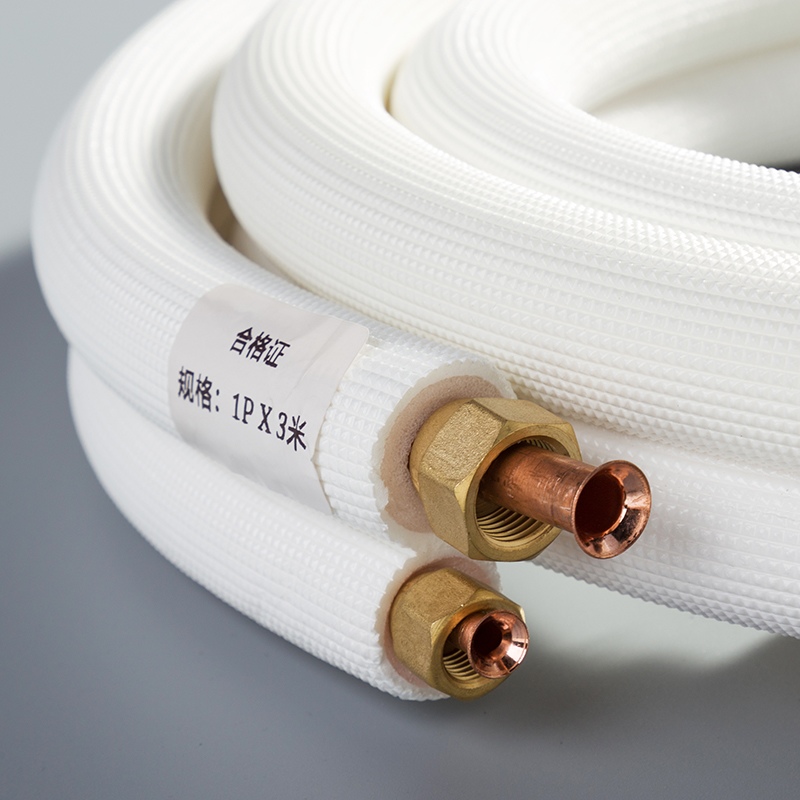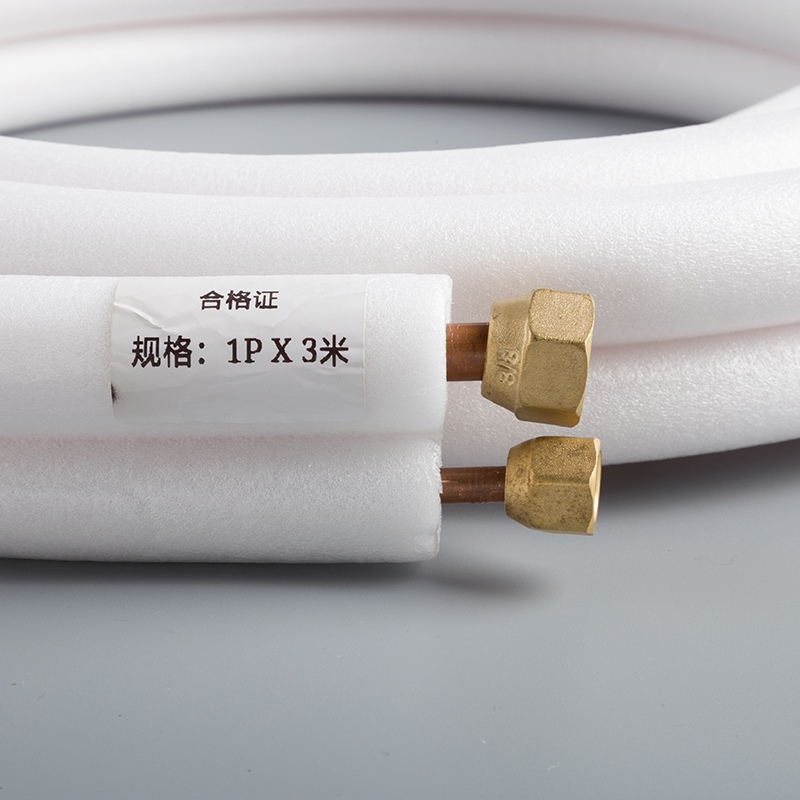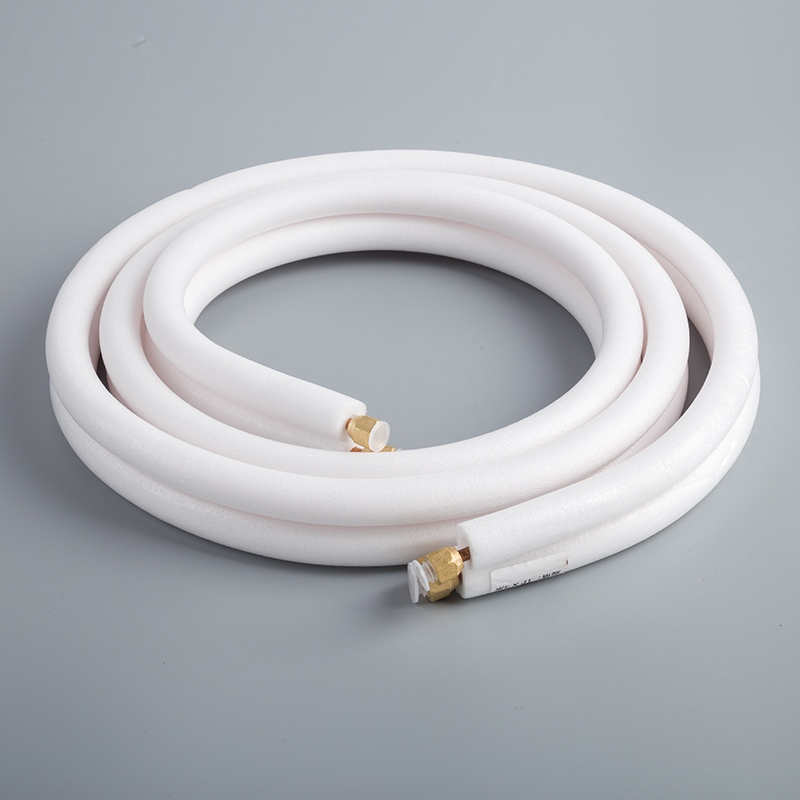Steps to Use a Copper Pipe Crimping Tool for Plumbing Projects

Knowing how to use a copper pipe crimping tool can transform your plumbing projects. It’s not just about making connections; it’s about creating secure, leak-proof joints that last. Plus, mastering this tool saves time and effort while boosting your confidence. You’ll feel accomplished as you handle professional-grade equipment with precision and ease.
Tip: Proper crimping ensures cost savings and enhances safety, making it a must-have skill for any DIY enthusiast or professional plumber.
Key Takeaways
A copper pipe crimping tool makes strong, leak-free connections fast. It is safe and important for plumbing projects.
Preparing pipes by measuring, cutting, and smoothing edges is key. This helps make secure and long-lasting crimped joints.
Clean and oil your crimping tool often to keep it working well. This ensures it stays useful for all plumbing tasks.
What Is a Copper Pipe Crimping Tool?
Purpose and Functionality of the Tool
A copper pipe crimping tool is a must-have for anyone tackling plumbing projects. Its primary job is to create permanent, leak-proof connections between copper pipes and fittings. You achieve this by compressing a crimp ring around the pipe and fitting, ensuring a secure seal.
Here’s why this tool stands out:
It eliminates the need for heat, making it safer and faster than traditional methods like soldering.
It allows you to complete connections quickly, saving time on your projects.
The crimping process ensures strong, watertight seals, reducing the risk of leaks.
Unlike other plumbing tools, a copper pipe crimping tool applies precise pressure to fittings, creating a reliable bond. Its versatility means you can use it with various pipe sizes and materials, making it a go-to choice for both DIY enthusiasts and professionals.
Note: This tool doesn’t just simplify your work—it also boosts your confidence as you create professional-grade connections with ease.
Advantages of Using a Copper Pipe Crimping Tool
Why should you choose copper pipe crimping over other methods? The benefits speak for themselves:
It’s faster and more efficient, letting you complete projects in less time.
The process is straightforward, so you don’t need advanced skills to get started.
It’s environmentally friendly. Copper pipes can be recycled repeatedly without losing quality, reducing waste and conserving resources.
Copper pipe crimping tools are reliable. They create durable connections that stand the test of time.
By using this tool, you’re not just improving your plumbing skills—you’re also contributing to a greener planet. Plus, the simplicity and speed of crimping make it a preferred method for modern plumbing systems.
Tools and Materials Needed for Copper Pipe Crimping

Before you start crimping copper pipes, you’ll need the right tools and materials. Having everything ready ensures a smooth process and helps you follow best practices and safety guidelines.
Essential Tools
Here’s a list of tools you’ll need to get started:
Copper pipe crimping tool: This is the star of the show. It compresses the crimp ring to create a secure connection.
Copper pipes: These are the main components of your plumbing system.
Press fittings: These connect the pipes and ensure a watertight seal.
Measuring tape: Use this to measure the pipe length accurately.
Pipe cutter: This tool gives you clean, precise cuts.
Deburring tool: It smooths the edges of the pipe to prevent damage to the fitting’s o-ring.
Marker: Mark the pipe to ensure proper fitting placement.
Each tool plays a critical role in the process. For example, the deburring tool prevents leaks by ensuring the pipe edges don’t damage the fitting. A pipe cutter ensures clean cuts, which are essential for a proper seal.
Additional Materials for Preparation and Safety
Safety should always come first. Here are some materials to keep you protected:
Safety gloves: These protect your hands from sharp edges and tool-related injuries.
Safety goggles: Shield your eyes from flying debris when cutting or deburring pipes.
Work apron: Keeps your clothes safe from dirt and potential chemical exposure.
Plumbing projects can expose you to risks like sharp tools and extreme temperatures. Wearing protective gear ensures you stay safe while working. Following best practices and safety measures not only protects you but also makes the process more efficient.
Step-by-Step Guide to Using a Copper Pipe Crimping Tool

Step 1: Measure and cut the copper pipe accurately
Accurate measurements and clean cuts are the foundation of a successful plumbing project. Start by using a measuring tape to determine the exact length of the copper pipe you need. Once measured, use a tubing cutter for a clean, square cut. If you don’t have a tubing cutter, a hacksaw works too—just make sure the cut is straight. After cutting, grab a deburring tool to remove any burrs or debris from the edges. This step ensures the pipe fits snugly into the fitting and prevents damage to the o-ring. Finally, clean the pipe thoroughly to avoid contamination that could weaken the connection.
Tip: Always double-check your measurements before cutting. It’s easier to cut again than to fix a pipe that’s too short!
Step 2: Deburr and clean the pipe ends thoroughly
Deburring and cleaning might seem like small steps, but they’re crucial for a strong connection. Use a deburring tool to smooth out the edges of the pipe. This prevents sharp edges from damaging the fitting’s o-ring. After deburring, clean the pipe ends with a cloth or cleaning solution to remove dirt, grease, or residue. A clean surface ensures the crimping tool creates a watertight seal.
Step 3: Mark the pipe for fitting placement
Before you start crimping, mark the pipe to indicate where the fitting will go. Use a marker to draw a line at the depth the pipe should insert into the fitting. This ensures proper alignment and prevents mistakes like over-crimping or under-crimping, which can lead to leaks. Misaligned fittings are a common issue, so take your time with this step.
Step 4: Install the correct jaw on the crimping tool
Your copper pipe crimping tool comes with interchangeable jaws for different pipe sizes. Select the jaw that matches your pipe and attach it securely to the tool. This ensures the tool applies the right amount of pressure during crimping. Refer to the tool’s manual if you’re unsure which jaw to use.
Step 5: Position the crimping tool over the fitting
Place the crimping tool’s jaw over the crimp ring on the fitting. Make sure it’s centered and aligned properly. Misalignment can result in a weak connection or damage to the fitting. Take a moment to double-check the positioning before moving on.
Step 6: Apply steady pressure to complete the crimp
Now it’s time to crimp! Squeeze the handles of the tool firmly and steadily until the crimp ring is compressed. Avoid jerky or uneven movements, as these can compromise the seal. You’ll know the crimp is complete when the tool’s handles meet or when the crimp ring is fully compressed.
Step 7: Inspect the crimped connection for quality
Once you’ve completed the crimp, inspect the connection to ensure it meets quality standards. Check for a uniform crimp with no visible gaps or deformities. You can also perform a pull test by gently tugging on the pipe to confirm it’s secure. If you notice any issues, it’s better to redo the crimp now than to deal with leaks later.
Pro Tip: Regularly inspect your crimping tool for wear and tear. A well-maintained tool ensures consistent results for all your projects.
Common Mistakes to Avoid in Copper Pipe Crimping
Even with the right tools, mistakes can happen during copper pipe crimping. Avoiding these common errors ensures your crimped joints are secure and long-lasting. Let’s dive into the most frequent pitfalls and how to steer clear of them.
Using incorrect tool or fitting sizes
Choosing the wrong tool or fitting size can lead to weak connections or leaks. Always follow manufacturer recommendations when selecting your crimping tool and fittings. Adjust the tool settings to match the crimp diameter and pressure specifications. Regularly check the calibration of your crimping tool to maintain accuracy. Routine maintenance also keeps your tool in top shape. If you’re new to copper pipe crimping, take time to learn how to use the tool correctly. Proper training ensures you avoid costly mistakes.
Tip: Double-check the size of your crimp rings and fittings before starting. It’s better to spend a few extra minutes upfront than to redo the entire installation.
Skipping the cleaning or deburring process
Skipping cleaning or deburring might seem like a time-saver, but it compromises the quality of your crimped joints. Burrs on the pipe edges can damage the fitting’s o-ring, leading to leaks. Always use a deburring tool to smooth the edges after cutting. Clean the pipe ends thoroughly to remove dirt, grease, or residue. A clean, smooth surface ensures a watertight seal and a professional finish.
Misaligning the crimping tool during use
Misalignment is a common issue, especially for beginners. To avoid this, align the crimping tool’s jaw with the crimp ring and fitting before applying pressure. Use the proper die setting for your pipe size and ensure the connector is positioned correctly. Consistent pressure is key—squeeze the handles fully until the ratchet cycles through. This ensures a secure and well-fitted crimp.
Pro Tip: Take a moment to verify the alignment before crimping. A little patience here saves you from redoing the connection later.
Applying uneven or insufficient pressure
Uneven or insufficient pressure can weaken the connection, causing leaks or failure over time. When using the crimping tool, apply steady, even pressure until the crimp ring is fully compressed. Avoid jerky movements or stopping midway. If your tool has a ratchet mechanism, let it complete the cycle for a consistent crimp.
By following these best practices, you’ll avoid common mistakes and achieve reliable, durable connections every time.
Tips for Maintaining Your Copper Pipe Crimping Tool
Proper maintenance of your copper pipe crimping tool ensures it stays in excellent condition and performs reliably for years. Here are some practical tips to keep your tool in top shape:
Clean the tool after every use
After each use, take a moment to clean your crimping tool. This simple step prevents debris, dirt, or corrosion from building up. Use a soft cloth to wipe down the tool and remove any residue. For moving parts, apply a light oil to keep them rust-free and operating smoothly. Regular cleaning not only extends the tool's lifespan but also ensures it works efficiently during your next project.
Tip: Make cleaning a habit. It’s easier to maintain a clean tool than to fix one damaged by neglect.
Store the tool in a dry, secure location
Where you store your crimping tool matters. Moisture can lead to rust, which affects the tool’s functionality. Always keep it in a dry, cool area, preferably in its case. A secure location also prevents accidental damage or loss. Proper storage protects your investment and ensures the tool is ready whenever you need it.
Regularly check for wear and tear
Inspect your crimping tool regularly for signs of damage. Look for cracks, loose components, or worn-out parts. Early detection of these issues can save you from costly repairs or replacements. If you notice anything unusual, address it immediately to avoid further damage.
Check for broken or cracked parts.
Tighten any loose components.
Replace worn-out parts promptly.
Routine inspections keep your tool safe and reliable for every installation.
Lubricate moving parts as needed
Lubrication is essential for smooth operation. Apply a recommended lubricant to the tool’s moving parts to minimize wear and tear. Follow the manufacturer’s guidelines to ensure you’re using the right product. Proper lubrication prevents rust and keeps the tool functioning like new.
Pro Tip: Don’t overdo it with the lubricant. A small amount goes a long way in maintaining your tool’s performance.
By following these maintenance tips, you’ll keep your copper pipe crimping tool in excellent working condition, ensuring it’s always ready for your next plumbing project.
Troubleshooting Common Issues with Copper Pipe Crimping
Even with the right tools and preparation, you might encounter a few hiccups while crimping copper pipes. Let’s tackle some common problems and how you can fix them.
Resolving issues with the tool not closing properly
If your crimping tool isn’t closing as it should, it’s usually due to one of these reasons:
Inconsistent crimping pressure
Poor preparation of the pipe or fitting
Lack of proper maintenance or calibration
To fix this, start by checking the tool’s calibration. A poorly calibrated tool won’t apply the right pressure. Clean the tool thoroughly to remove any debris that might block its movement. If the issue persists, inspect the moving parts for wear or damage. Regular maintenance is key to keeping your tool in top shape.
Tip: Always store your crimping tool in a dry, secure place to prevent rust or damage.
Fixing leaks in crimped connections
Leaks can be frustrating, but they’re often easy to fix if you follow these steps:
Ensure the ferrule is aligned correctly with the pipe and fitting.
Check that the ferrule is positioned according to the manufacturer’s specifications.
Verify the fit of the ferrule against the pipe and fitting before crimping.
Use the correct crimping die for your pipe size and fitting.
Inspect the crimping dies for wear or damage regularly.
Monitor the pressure during crimping to ensure consistency.
By following these steps, you’ll create a watertight seal and avoid future leaks.
Identifying when to replace worn-out parts or the tool
Over time, even the best tools wear out. Look for signs like cracks, loose components, or difficulty in operation. If you notice these, it’s time to replace the worn-out parts or the entire tool. Using a damaged tool can lead to poor-quality crimps and potential leaks. Regular inspections help you catch these issues early.
Pro Tip: Keep a spare set of crimping jaws handy. Replacing them promptly ensures your projects stay on track.
By addressing these common problems, you’ll master troubleshooting copper pipe crimping issues and ensure your plumbing projects are a success.
Using a copper pipe crimping tool effectively boils down to mastering a few key steps:
Measure and cut the copper pipe.
Deburr the pipe edges.
Position the crimp ring correctly.
Crimp the pipe securely.
Inspect the crimp for quality.
Preparation and proper technique are essential for success. Regular maintenance, like cleaning the tool after use and lubricating moving parts, ensures it stays reliable for years. With these tips, you’re ready to tackle plumbing projects confidently and create durable, leak-proof connections.
Remember: Practice makes perfect. The more you use your crimping tool, the more skilled and efficient you’ll become!
FAQ
What size copper pipes can I use with a crimping tool?
Most crimping tools work with standard sizes like ½ inch, ¾ inch, and 1 inch. Always check your tool’s specifications for compatibility.
Tip: Use the correct jaw size for a secure connection.
Can I reuse crimped fittings if I make a mistake?
No, crimped fittings are permanent. If you make a mistake, you’ll need to cut the pipe and replace the fitting with a new one.
Note: Double-check alignment before crimping to avoid errors.
How do I know if my crimp is secure?
Inspect the crimp for uniform compression and no visible gaps. Perform a pull test by gently tugging the pipe to ensure it’s firmly connected.
Pro Tip: Use a crimp gauge to verify the connection meets standards.
See Also
Beginner's Guide: Soldering Copper Pipes Made Easy
Selecting the Ideal Flaring Tool for Half-Inch Copper Pipe
Measuring Copper Pipe: A Simple Guide for DIY Projects
Top Five Tips for Working with Quarter-Inch Copper Fittings
Five Simple Steps to Connect Compression Fittings on Curved Copper


